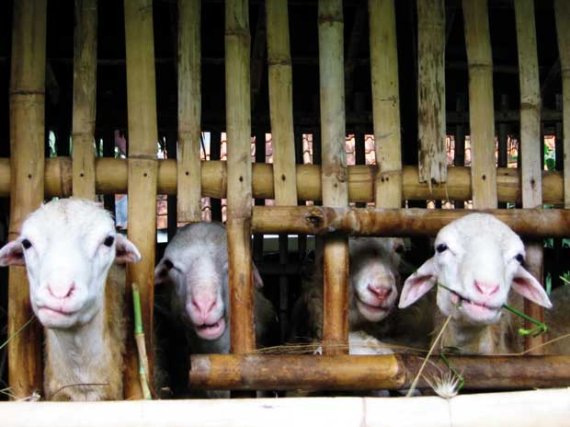It pays to give goats on credit to poor rural inhabitants in Indone-sia, but those inhabitants must have prior experience with keeping livestock. This is the conclusion of the Indonesian researcher Gede Suparta Budisatria and his supervisor Henk Udo. After the severe earthquake in central Java in 2006, the Indonesian government gave five goats each to families in the affected area. The intention was that the aid programme would give poor rural inhabitants a source of income. The goats were provided on credit and the inhabitants had to settle the debt within a few years. After two years, Budisatria looked at 72 farmers, their experiences with the goats and whether they had paid off the debt. Four in six families had managed that. ‘That is quite a high success rate,’ says Henk Udo of the Animal Production Systems Group, the study supervisor. Providing goats on credit turned out to be a good way of combating poverty, says Udo, because the goats provided about 30 percent of the minimum income for the families. Families who had prior experience with keeping animals had the most success. Things were much more difficult for families who had little or no experience with animals. ‘Their goats had died, for instance, or they had sold a couple even though they had not yet settled the debt.’
Poverty line
Whether the families were successful also depended on the village community, says Udo. The goats were often kept in a shared barn belonging to a group of farmers and each of the participating families had its own stall. The groups that were headed by a livestock expert and discussed things properly performed above average in paying off the debt, concluded Budisatria and Udo in the January issue of Small Ruminant Research. The goats did not bring the farmers above the poverty line, but the animals were a welcome supplement to income from the cultivation of rice or cassava, for example. ‘They would have needed 15 goats to get above the poverty line, but they don’t have enough land, feed or labour for that.’ According to Udo, providing credit in the form of goats is a method of combating poverty that is common among governments and NGOs but the effects are rarely evaluated properly. ‘Aid organizations typically note with satisfaction that X goats have been provided to poor farmers, but you should really measure whether the project leads to more income for individual households.’ Budisatria is not just a researcher, he also works as an expert for the Indone-sian government in the area of small ruminants and tackling poverty.

